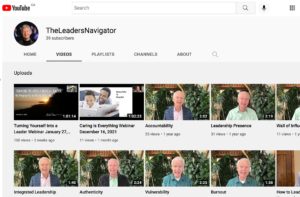In recent months the topic of bullying has surfaced in my leadership development programs. Although I haven’t thoroughly researched the topic, my observation is that there is an increase in abusive and bullying behavior in the workplace. Perhaps it is related to the economy, increased stress at work, or maybe people are getting more courageous, bringing it to the forefront and are no longer willing to be abused. Even if you are not experiencing bullying, I hope the following will help you to communicate in any of your relationships.
A coaching client shared a recent experience with her boss that went something like this:
“My boss asked me to come to her office. As soon as I sat down she laid into me about how unproductive I was, how my performance had slipped drastically in the past six months, and how I needed to step up my performance or in my next review she would start to document my work with ratings that would put my future career in jeopardy.”
While this behavior is obviously indicative of a controlling, bullying person, how do you determine if this is a bully or a boss that doesn’t handle stress well and is a bad communicator?
Following is a process that I suggest you can use to find out.
Step 1. Don’t communicate when you are in a high emotional state. As I learned from my colleague and friend, Valerie Cade, an expert in workplace bullying, “to be honorable, you have to meet dishonor with honor.” Getting angry or defensive in response to destructive communication is only throwing fuel on an already damaging fire. If you are hurt, angry, or in any way upset by this kind of feedback (and who wouldn’t be), take a few more moments to listen, then give yourself permission to say something like, “Thank you for the feedback. I want to get to the bottom of this, and in order to do so I need to step away and get some perspective. Let’s come back when we can problem solve this rationally and strategically.” Then politely excuse yourself.
Step 2. Get support from a confidant. Allies are trusted friends, colleagues, or coaches who provide perspective, wisdom, encouragement, support, and honesty. It is vital, in the work of leadership, to know we aren’t alone. The most important kind of allies are confidants: people in your life who create a safe space to be who you are, who will listen to your truth and will, in turn, tell you the truth and help hold you accountable. Confidants ask questions like, “What’s going on? What can be learned from the mistakes and failures? Can you learn something for the future? What are your options?”
Step 3. Once you let go of the emotional reaction, schedule a time to meet with your boss to problem solve a solution that responds to their concerns. When you meet next, bring a notepad and ask only one question, “What do you need from me to ensure that I get my performance right, so that you will never again accuse me of these things. I want to understand exactly what I need to do to turn this around.” Then sit and listen and make notes. You don’t have to agree or disagree. The goal is to understand what your boss is asking for. If they need more time to clarify this on their own, then of course, give them the time to do so.
Step 4. If your boss starts to attack you, stop and ask them to clarify what behaviors they are expecting. Reiterate that you are here to solve the problem, to be a part of the solution moving forward, not the problem going backwards. In any of these steps, do not allow yourself to be put into a situation where you are being criticized, demeaned, or bullied. Take charge of the conversation to shift it from criticism to identification of solutions or requests.
Step 5. Once you hear your boss out and list the behaviors they are asking you to change, then negotiate an agreement between you. Conflict comes from unmet needs. You don’t resolve conflict with more conflict. You resolve conflict by getting to the root of the problem. The negotiation process may take a few meetings. Give yourself and your boss the time and the space to carefully clarify the expectations, agreements, and needs for support from each other.
Step 6. Assess Intent. This is the step where the rubber hits the road, where you assess if your boss is a bully. Bullies have no intent to work toward a solution. Bullies have themselves been bullied. They have no interest in problem solving, in helping you find a solution, and in helping you succeed. They only have interest in criticizing, controlling, and manipulating with the intent to bully. You can assess their intent by giving them (with an open mind and a spirit of generosity) a few chances to move toward a solution. Give them the benefit of the doubt in the first meeting. Maybe they are just stressed and are communicating poorly. But if after a few tries they still have no interest in moving toward a solution and helping you understand and change your actions, take the appropriate action toward taking care of yourself. If they are, in fact, a bully, here are a few options to consider:
a. Get support from a trusted outsider – either an HR manager inside your organization or an outsider who specializes in bullying. Don’t ever attempt to deal with a bully who has positional authority over you on your own.
b. Take full responsibility for your willingness to work on a solution, and be honest about what you are up against.
c. You may have to consider leaving your organization. Be sure you have covered all your bases, documented all of your interactions and done everything possible on your end to resolve the issue.
Please note that these are very general points. If you need support with any of these steps, contact our office for a confidential and complimentary half hour consultation, and we’ll help you find the resources and support that you need.



